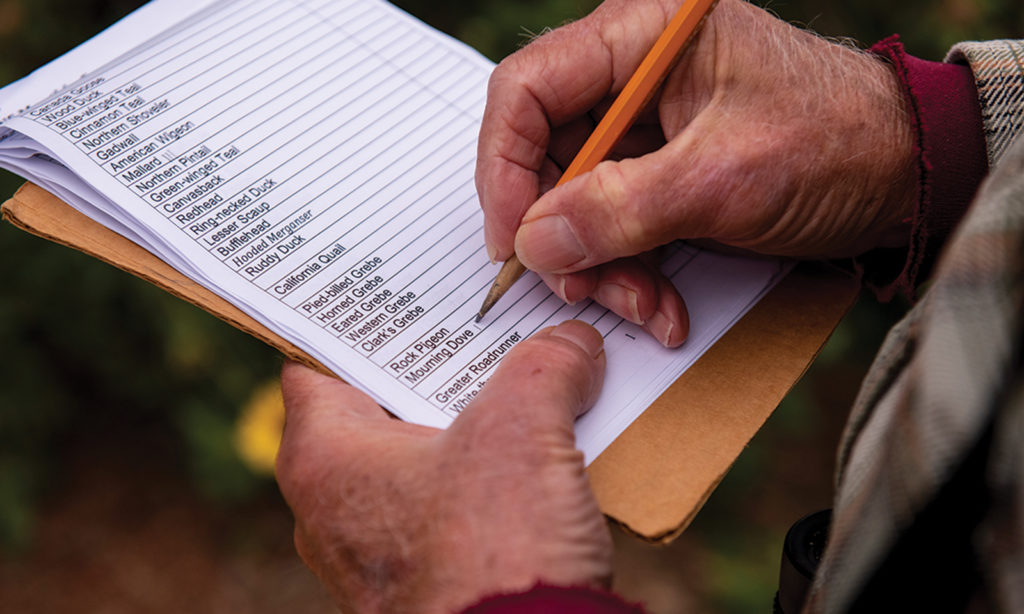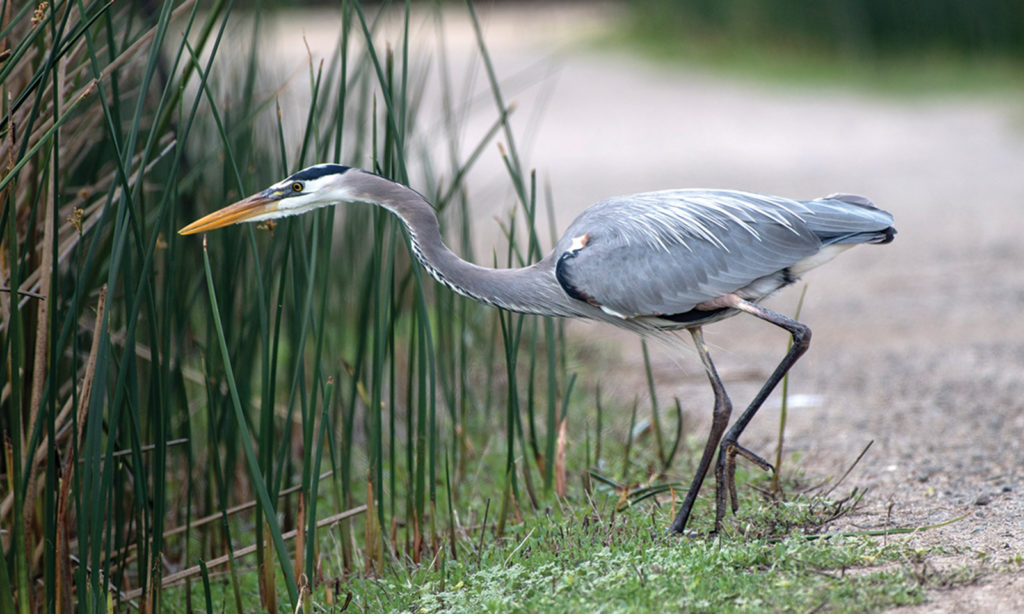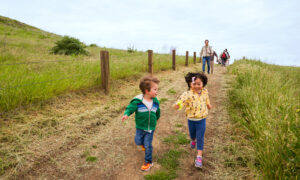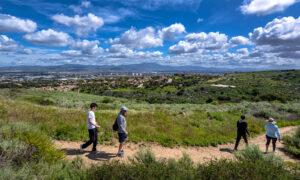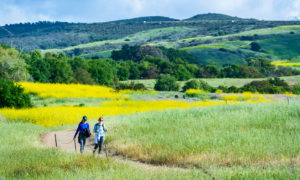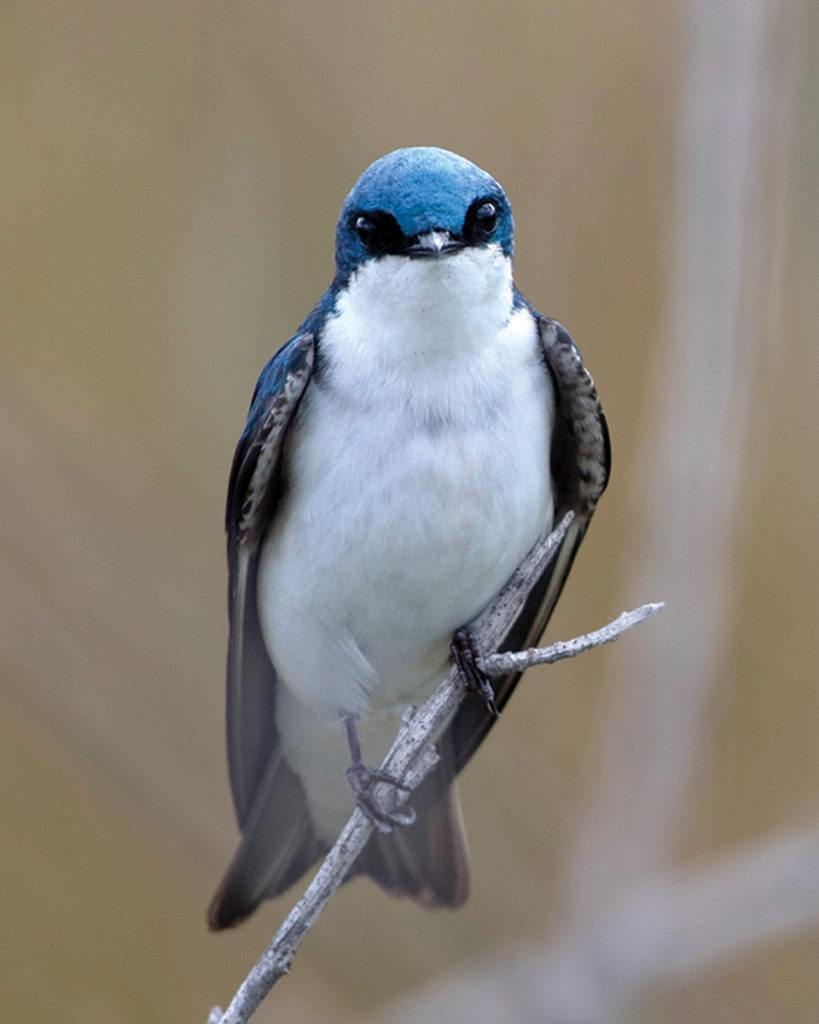
On a Friday morning in early March, I visited the San Joaquin Wildlife Sanctuary in Irvine to look for birds.
“This is a hot spot,” said birder Darrell Wilson, binoculars dangling from his neck. That’s why bird-watchers have gathered here on the first Friday of every month to wander the trails and check in on the population.
This day’s highlights: a roadrunner (beep, beep) and a rare greater white-fronted goose sighting.
I asked Wilson if it was a good day. “Every day for bird counting is a good day,” he said, smiling.
Wilson began bird-watching in 2003 and has spent thousands of hours observing and enjoying unique species at San Joaquin Wildlife Sanctuary. Wilson said it is the single most important bird habitat in Orange County.
The sanctuary is home to several ponds, as well as riparian woodlands and huge swaths of willows. It is where the endangered least Bell’s vireo arrives each May to nest before heading down to Mexico when summer is over.
All told, 327 species of birds can be spotted at the sanctuary, depending on the season.
Bright-yellow bush sunflowers were blooming along the trails the day I was at the marsh, and the air was filled with the scent of sage and the sound of birds chirping. Cedar waxwings stopped to nibble bright-red native toyon berries.
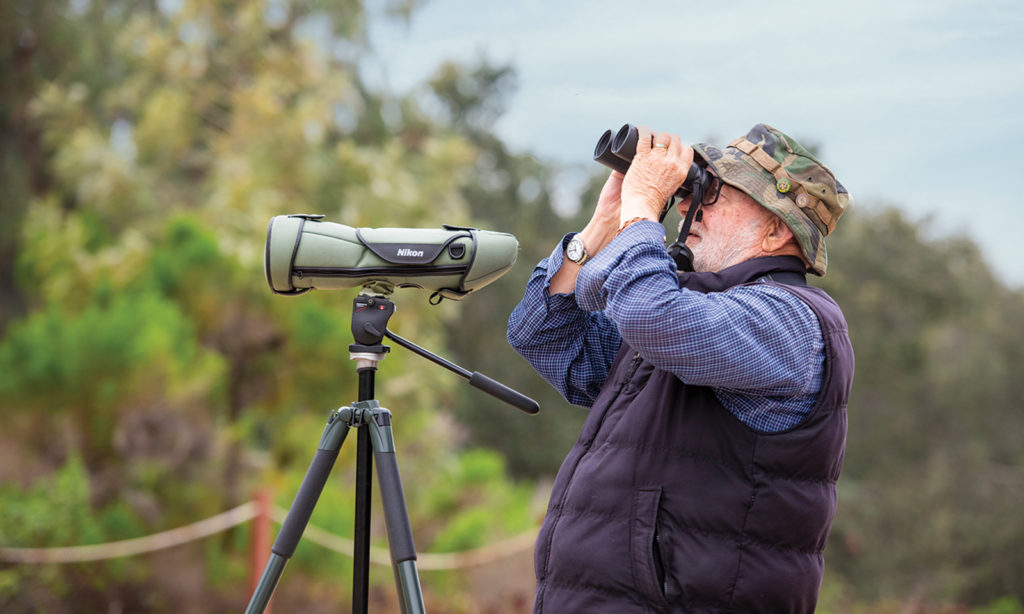
I bumped into birder Laurie Smith, who comes to the sanctuary with her camera every day around 7 a.m. and stays until she has to go to work at 9 a.m. She showed me some of her photographs, including a great horned owl. But she is a hawk person at heart.
“I like to watch the osprey,” she said. “They’re building their nests right now.”
After the count wrapped up at 10 a.m., we drove to the nearby Sea & Sage Audubon house, a pretty yellow cottage on Irvine Ranch Water District Operations Center property.
Sitting at a picnic bench, birders who had spread out on the sanctuary that morning shared their counts. The data was then logged into ebird.org, “the world’s largest biodiversity-related citizen science project,” managed by the Cornell Lab of Ornithology.
Darrell Wilson was right: It was another good day for bird counting.
